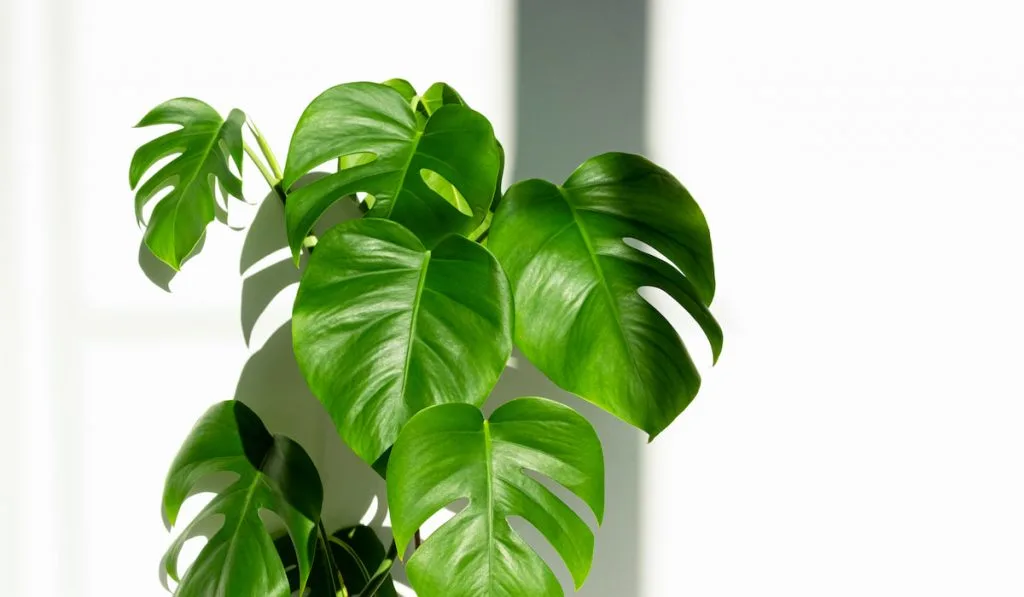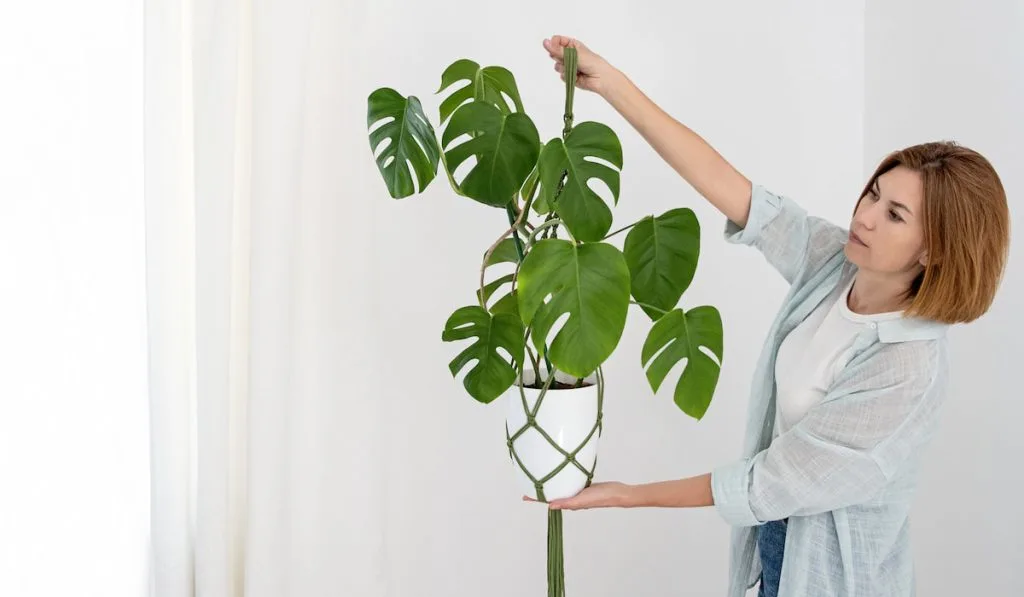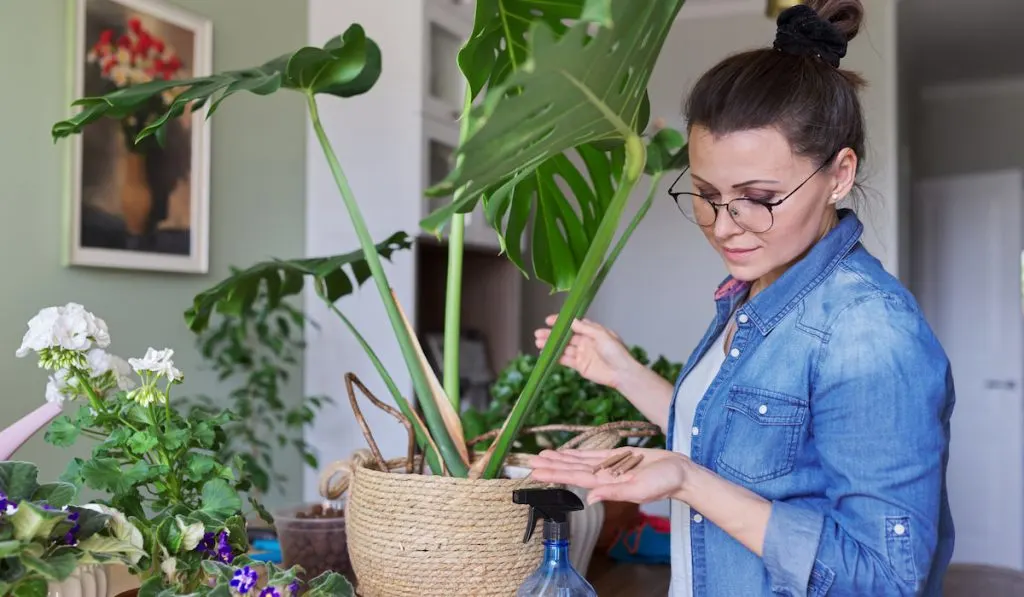Are you thinking of a new plant to grow? You should grow a monstera plant. They make great indoor plants and are also very easy to care for. In this article, you will learn how to care for monstera plants.
How do you care for a monstera plant?
You can care for monstera plants by giving them the right conditions. By right conditions, you need to consider temperature, light, pH, soil, etc. You should also provide a peat pole if you can.

Will your indoor monstera plant produce fruits? Can you grow monsteras from seed? Continue reading.
Taking Care of Your Monstera Plant
Learn how to care for your monstera plant by following the tips below:
Basic Requirements of Monstera Plants
Here are the basic requirements of monsteras:
1. Light
Even though monstera plants can grow in a wide range of light intensity, they prefer shaded or indirect light. This means that monstera plants make great indoor plants.
You should place your monstera plants in a location where they will not get more than 4 hours of direct sunlight, but have access to more than 4 hours of indirect sunlight. They also grow well under grow lights.
2. Soil
These plants love well-drained soil but can tolerate a wide range of soil. You can grow monstera plants in sand, garden soil (equally mixed with compost), potting mix (with a high ratio of peat moss), etc.
Monstera plants need soil that permits easy root movement and does not suffocate roots due to retention of water.
3. Temperature
Monstera plants have a hardiness zone of 10-12. In temperate regions, the preferred temperature of these plants is 55-59°F (13-15°C).
Monstera plants can withstand a low temperature of 30°F (-1°C), but not for more than a few hours. When the constant temperature drops below 50°F (10°C), the growth of your monstera plant stops, and the plant can die due to frost.
4. pH
Monsteras do well in slightly-acidic or neutral soil. If the soil pH is alkaline, your monsteras can have stunted growth.
You should maintain a soil pH of 6.0-7.0 for your monstera plants. Make sure that the fertilizer you feed your plants does not increase the pH of the soil.

5. Water
Monstera plants love water, but not so much. You should wait until the soil or potting mix gets slightly dry before you water during spring and summer. In winter and fall, however, water your monsteras less often.
6. Nutrients
One great thing about monsteras as indoor plants is that you do not have to spend much on fertilizer. A simple mixture of compost with the potting mix or soil is enough for your plant.
If need be (i.e. you are observing signs of nutrient deficiency), you can apply a balanced fertilizer occasionally (2-3 times per month). You can use granular or liquid fertilizer for your plants. Foliar fertilizing is also a great way of fixing nutrient deficiencies.
7. Other Care Tips
Here are other essential care tips for your monstera plant:
- Humidity: As plants that naturally grow in forests, monsteras are used to high humidity (more than 60%). To mimic its natural environment, you should mist the leaves of your plant by spraying it with rainwater or demineralized water.
- Pruning: When you see aerial roots, you should trim or cut them off. If you like, you can tuck them right back in. Aerial roots are roots that grow above the ground. They can make your plant unattractive.
- Training Your Plant: Do you know that monstera plants are vines? In their natural habitat, they crawl until they find a tree to climb and then anchor on that tree. People who cultivate monstera plants outdoors usually plant the seeds close to trellises or a tree. For indoor monster plants, you should use a moss pole. You, however, can leave your plant to grow on its own.
Awesome care tips, right? I told you that monstera plants are easy to care for.
Transplanting Monstera Plants to New Pots

If your monstera plant regularly grows new aerial roots and you are tired of pruning or tucking them back into the soil, it may be a sign that the pot is too small, and your plant needs a new pot.
Follow the steps below to repot your monstera plant:
- Take the pot outside so that you do not stain your house with dirt.
- Carefully dig the soil or potting mix with a trowel or your hands (with gloves on). Make sure that the roots are not damaged.
- When you have dug enough soil or potting mix to reveal most of the roots, bring out the plant from the soil.
- Rinse the roots with clean water.
- Insert the plant into a new bigger pot and then cover the roots with more soil or potting mix.
- Water the plant.
- If the new pot has a peat pole, carefully guide the plant towards the pole so it can climb.
Easy, right?
Related Questions and Answers
Do you have any questions regarding monstera plants? Here are some anticipated questions (that you might ask) and their answers.
1. Can You Eat the Fruits of Your Monstera Plants?
Yes, you can definitely eat the fruits of monstera plants. Monstera plants have fruits that can grow up to 10 in (25 cm) long and 1-2-2.0 in (3-5 cm) wide.
The fruits resemble an ear of corn and have a covering that looks like a cluster of hexagonal scales. While the smell of monstera fruits resembles the combination of pineapples and bananas, their taste resembles the combination of pineapples and jackfruits.
Will your monstera plant produce fruits? Well, as tropical plants (i.e. warmth-loving plants), your monstera plant may not flower nor produce fruits because of the change of temperature (it is difficult for monsteras to produce flowers outside their natural habitat).
If, however, you can provide the right temperature and other conditions necessary to produce fruits, you will get to enjoy the delicacies.
When should you collect the fruits? At first, the fruits will appear green and fully covered with scales. The fruit is ready for collection when the scales are becoming yellow and some scales have begun to fall off (the fruit also begins to release a strong smell).
When you collect the fruit, you should store it by wrapping it in a paper bag. When all the scales have fallen and the strong smell stops, it is ready for eating.
2. What is the Best Way to Repel Pests from Your Monstera Plants?
Some common pests of monstera plants are:
- Thrips
- Aphids
- Mealybugs
- Spider mites
If you find pests on the leaves of your monstera plant, you can simply spray clean water on the leaves to wash them off. You can also use insecticidal soap if you wish.
To prevent more pests, regularly wipe the leaves of your plant with a paper towel or damp sponge.

3. Can You Propagate Monstera Plants?
It is very easy to propagate monstera plants. You can always grow the plant from seeds, but if you like, you can propagate it from a cutting.
When taking a cutting, find a short stem with an aerial root (if possible). Cut a piece on either side of a leaf node. Remove the leaf from the stem entirely. New roots will grow from the node.
If some aerial roots are with the stem, just plant it in a new pot and water (as suggested earlier). If there is no root attached, you should place the stem in a glass of clean water. Change the water every 3-4 days until you can see new roots. Plant afterward (in 2-3 weeks).
Have you seen the answer to your question?
Final Thoughts
Monstera plants make great indoor plants because they are easy to care for and they also do not need full and direct sunlight. You can grow them from seeds or from cuttings. Make sure you apply every tip on this article to get the most beautiful plants in your indoor environment.
Resources
- https://en.wikipedia.org/wiki/Monstera_deliciosa
- https://www.thespruce.com/how-to-grow-monstera-deliciosa-5072671
- https://www.thesill.com/blogs/plants-101/how-to-care-for-monstera-monstera-deliciosa
- https://houseplantresourcecenter.com/2019/07/how-to-care-for-a-monstera-indoor-plant/
- https://www.gardeningknowhow.com/houseplants/swiss-cheese-plant/monstera-deliciosa-propagation.htm
